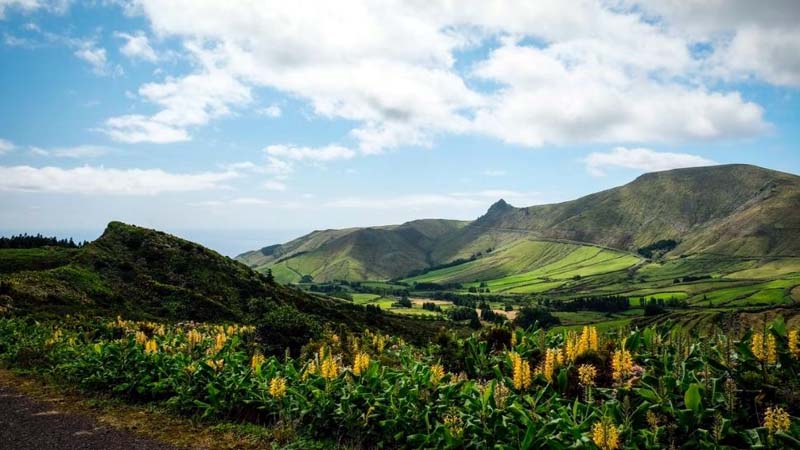![[feature] The 10 Best Eco-Friendly Holiday Destinations in 2022](https://blogger.googleusercontent.com/img/b/R29vZ2xl/AVvXsEhFoYA-KOAl0rEX7ij1kU7ZWAA7NQA3SWUpuJJ2HuTJy-SlVuTgsGQ0ph83ETgVvMEO1OBjGoI2vNcJ4xV8wPS9JRfU6qA7DSRVuw1kLPm3YqwjvTGFAiAsbU6-JSkr-BEHkD6YzlILvMr5I80z4jIFcyYNWleaAXNHLJZmKvZJ22oS_b9RvDgPSRrOtQ/s16000/Holiday.jpg) |
| © Provided by Esquire Philippines |
By Anri Ichimura, Esquire Philippines
As fun as traveling can be, it’s also an unfortunate source for pollution and littering. Just visit any of the top travel destinations in the world, and you might be disappointed when you find the dirty streets and smog-infested skies that are hidden from social media. We can’t blame the cities for this—it’s often the thousands of tourists that end up polluting these formerly pristine locations.
But there is a way to travel in a greener, cleaner way. It all starts with choosing destinations that champion sustainability and eco-tourism. These places might not be the most popular destinations, but they certainly are among the best places to learn how eco-tourism can be done successfully.
From advocates of renewable energy to educational tours, here are the top 10 eco-friendly places of 2022.
Bhutan
 |
| © Provided by Esquire Philippines |
Globe-trotters agree on one thing: Bhutan is not an easy nation to travel to. The country has a strict tourism capacity limit that restricts the number of tourists entering the country as the nation places great importance on maintaining its conservation efforts and sustainable lifestyles. It’s strict rules for outsiders are the reason why Bhutan has remained unchanged and untainted by the outside world for centuries.
Read More: Best local destinations for every barkada
Botswana
 |
| © Provided by Esquire Philippines |
Botswana’s camps, lodges, and safaris all work together to ensure its travel industry incorporates and benefits the locals of the area—and by locals, we mean both the humans and animals. Animal conservation and education play a huge part in Botswana’s travel industry.
The Gambia
 |
| © Provided by Esquire Philippines |
This small Western Africa is teeming with wildlife and scenic lagoons. The Gambia’s tourism industry took a turn during the pandemic with the innovation of the Ninki Nanka Trail, which follows the River Gambia and allows tourists to discover the rich biodiversity and history of this African nation.
Southern Carpathians, Romania
 |
| © Provided by Esquire Philippines |
Europe is not the first thing that comes to mind when you think of “wild country,” but Romania is working to “rewild” Europe to revive the continent’s rivers, forests, and wildlife. Conservation is at the heart of tourism in the Southern Carpathians, as the local government works toward increasing the population of the region’s endemic bears, lynxes, and wild cats.
Costa Rica
 |
| © Provided by Esquire Philippines |
In Costa Rica, tourists will encounter more creatures, critters, and plants than anywhere else in the world. The biodiverse nation promotes sustainable tourism by ensuring all ecolodges pledge to minimize the impact on surrounding areas. In Costa Rica, almost all the electricity is renewably sourced and plastic is nowhere to be found.
Read More: Rice Terraces of the Philippine Cordilleras, Philippines
Slovenia
 |
| © Provided by Esquire Philippines |
Slovenia is an example of how a modern nation can co-exist with nature without competing for land and resources. In Slovenia, citizens learn to live with the greenery as most residents go hiking and biking on the weekends and live a zero-waste lifestyle on the weekdays.
Azores Islands, Portugal
 |
| © Provided by Esquire Philippines |
This private oasis in the Atlantic Ocean has pledged to preserve its natural landscapes and marine life, all while promoting green tourism. Located off the shore of Portugal, Azores Islands is proof that populated countries can accomplish sustainable tourism if we reserve locations for travel and support it with completely renewable energy.
Scotland
 |
| © Provided by Esquire Philippines |
When you think of Scotland and sustainability, the first thing that will likely pop into your head is windmills. The vast expanse of the highlands and lowlands promote eco-friendly travel throughout the rich green landscapes. If you want to engage in mountain bike trails, go fishing in the pristine lochs, or simply cozy up in a quiet countryside cottage, Scotland is the place to be.
Uruguay
 |
| © Provided by Esquire Philippines |
Uruguay is a master class in renewable energy adoption. Over 95 percent of its energy is supplied by renewable energy sources, which you quickly realize upon seeing the solar panels in Montevideo’s airport. With its luscious forests, clean air, and waters teeming with wildlife, it’s no wonder Uruguay is the third-best country in environmental sustainability.
Estonia
 |
| © Provided by Esquire Philippines |
This small nation is made up of 70 percent forests and bogs, making this a great location for nature lovers seeking to reconnect with the wild forest. The pristine quality of air and various parks and wild areas make this Europe’s Green Capital.
See more at Esquire Philippines






















